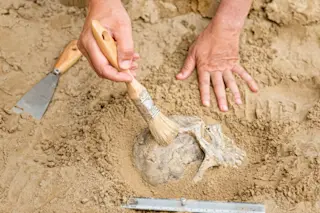The answer to the great question — “where did our species come from?” — has long been Africa.
It was from somewhere in the African continent, most scientists believe, that modern humans evolved around 200,000 years ago before spreading across the world and becoming the dominant species we are today.
Finding the evidence is challenging as remains of the oldest Homo sapiens — our distant ancestors that are believed to have split off from Neanderthals some 500,000 years ago — are scarce. Most have been found in Eastern Africa.
In 2003 a skull dug up near a village in Eastern Ethiopia was dated back to some 160,000 years ago. Its anatomical features — a relatively large brain, thin-walled skull and flat forehead — made it the oldest modern human ever discovered. Two years later, its title was stolen by a pair of partial skulls discovered in Omo-Kibish, another Ethiopian dig ...














